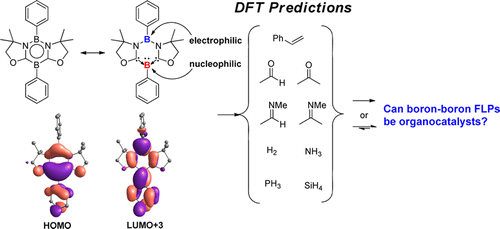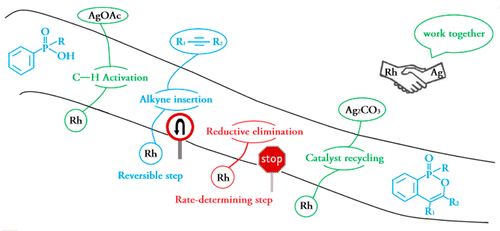Stability, Reactivity, Selectivity, Catalysis, and Predictions of 1,3,2,5-Diazadiborinine: Computational Insight into a Boron–Boron Frustrated Lewis Pair
Submitted by Jun Zhu on Tue, 08/25/2015 - 09:25
Recent progress in frustrated Lewis pairs (FLPs) has attracted increasing attention. However, most of the FLPs are composed of Lewis basic phosphines and Lewis acidic boranes. In 2015, Kinjo and co-workers reported the first intramolecular boron–boron FLP, namely, 1,3,2,5-diazadiborinine (1), which showed high regioselectivity in the reactions with methyl trifluoromethansulfonate, phenylacetylene, and CO2. More interestingly, the activation of CO2 was found to be reversible when the temperature was elevated to 90 °C.

